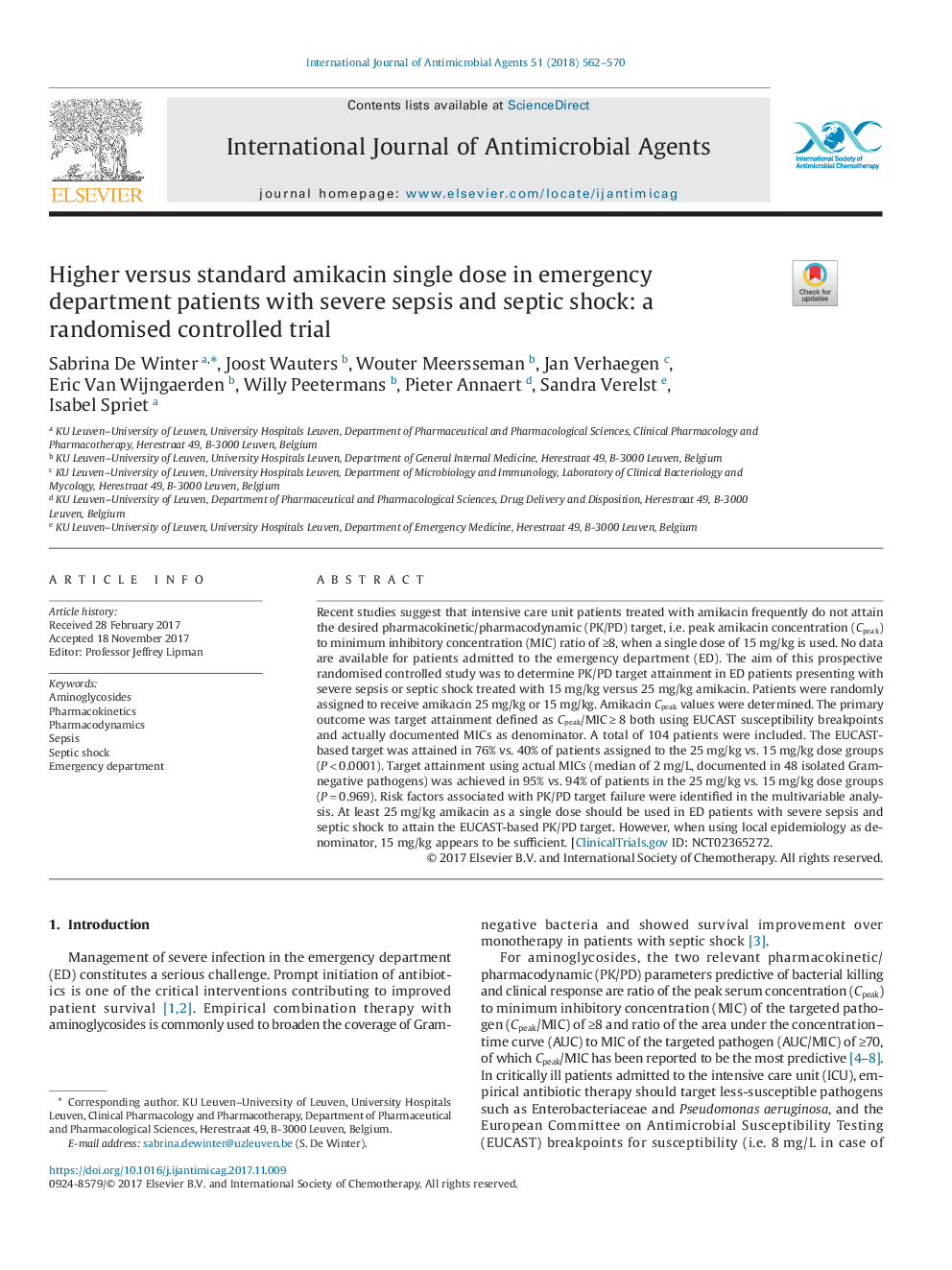| Article ID | Journal | Published Year | Pages | File Type |
|---|---|---|---|---|
| 8738572 | International Journal of Antimicrobial Agents | 2018 | 9 Pages |
Abstract
Recent studies suggest that intensive care unit patients treated with amikacin frequently do not attain the desired pharmacokinetic/pharmacodynamic (PK/PD) target, i.e. peak amikacin concentration (Cpeak) to minimum inhibitory concentration (MIC) ratio of â¥8, when a single dose of 15âmg/kg is used. No data are available for patients admitted to the emergency department (ED). The aim of this prospective randomised controlled study was to determine PK/PD target attainment in ED patients presenting with severe sepsis or septic shock treated with 15âmg/kg versus 25âmg/kg amikacin. Patients were randomly assigned to receive amikacin 25âmg/kg or 15âmg/kg. Amikacin Cpeak values were determined. The primary outcome was target attainment defined as Cpeak/MICââ¥â8 both using EUCAST susceptibility breakpoints and actually documented MICs as denominator. A total of 104 patients were included. The EUCAST-based target was attained in 76% vs. 40% of patients assigned to the 25âmg/kg vs. 15âmg/kg dose groups (Pâ<0.0001). Target attainment using actual MICs (median of 2âmg/L, documented in 48 isolated Gram-negative pathogens) was achieved in 95% vs. 94% of patients in the 25âmg/kg vs. 15âmg/kg dose groups (Pâ=â0.969). Risk factors associated with PK/PD target failure were identified in the multivariable analysis. At least 25âmg/kg amikacin as a single dose should be used in ED patients with severe sepsis and septic shock to attain the EUCAST-based PK/PD target. However, when using local epidemiology as denominator, 15âmg/kg appears to be sufficient. [ClinicalTrials.gov ID: NCT02365272.
Related Topics
Life Sciences
Immunology and Microbiology
Applied Microbiology and Biotechnology
Authors
Sabrina De Winter, Joost Wauters, Wouter Meersseman, Jan Verhaegen, Eric Van Wijngaerden, Willy Peetermans, Pieter Annaert, Sandra Verelst, Isabel Spriet,
